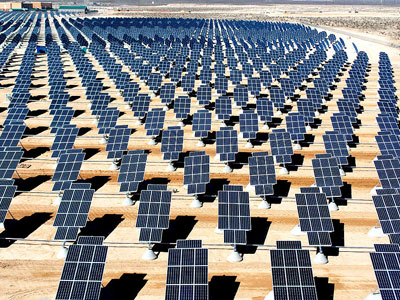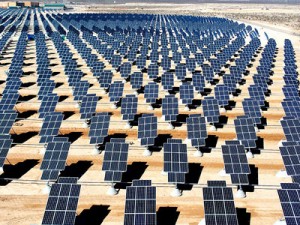
Prudence Needed in Department of Commerce Tariff Decision
 The United States Department of Commerce recently reported that it has preliminarily opted to apply a 31% tariff to Chinese solar panel imports. The decision comes as a response to rising sales of inexpensive Chinese solar panels which have led to sharp profit declines for many companies producing solar panels in the U.S. Even in the face of tax breaks and stimulus financing, these American businesses have struggled. For instance, Solyndra filed for bankruptcy last year despite the $535 million it received as part of President Obama’s clean energy stimulus package. Similarly, First Solar, Inc. has seen a 62.3% decline in its share prices even with over $3 billion in Department of Energy Loan guarantees.
The United States Department of Commerce recently reported that it has preliminarily opted to apply a 31% tariff to Chinese solar panel imports. The decision comes as a response to rising sales of inexpensive Chinese solar panels which have led to sharp profit declines for many companies producing solar panels in the U.S. Even in the face of tax breaks and stimulus financing, these American businesses have struggled. For instance, Solyndra filed for bankruptcy last year despite the $535 million it received as part of President Obama’s clean energy stimulus package. Similarly, First Solar, Inc. has seen a 62.3% decline in its share prices even with over $3 billion in Department of Energy Loan guarantees.
Commerce believes American solar manufacturers have lost their ability to compete with their Chinese counterparts, and estimates that Chinese manufacturers on average sell their panels at 31% below market price having analyzed dumping margins for over 50 Chinese solar exporters. While this market development raises clear economic concerns for American manufacturers, it poses an even larger concern for consumers just when solar power is becoming competitive with conventional electricity generation.
In fact, solar installations have surged in the U.S. and other industrial nations largely due to a decline in panel prices. 2011 alone saw more than a twofold increase in solar installations from 2010 levels. The tariff would force consumers to pay higher prices for solar electricity, and could reverse that industry-wide trend. Further, the tariff is aimed solely at photovoltaic panel manufacturers who have experienced declining profit margins, and lost their competitiveness in the world market. On the other hand, solar installers are likely to see a slowdown on their end of the industry.
The U.S. has ample solar resources, making solar power an exciting opportunity for the U.S. to wean itself off of fossil fuels- a necessary step toward climate change mitigation. The biggest challenge to achieving a scalable solar infrastructure, however, is the capital-intensive nature of the industry. After all, sunlight is free, but the physical capital and installation of solar technology is quite costly. Because tariffs serve to raise market prices to a “fair” level, Commerce will effectively raise the solar industry’s cost of capital; hindering its further expansion.
Another drawback to a slowdown in domestic solar installations is the likelihood that solar financiers and installers will take on an increasing number of projects abroad. For instance, SunEdison has recently turned to African and Asian villages traditionally powered by diesel generators and subject to frequent blackouts for installation projects. The afore-mentioned glut of panels has made such projects more economical, and raised profitability expectations. If enacted, the DOC’s tariff could accelerate solar companies’ shifting focus to foreign markets. Whereas the U.S. energy industry has contributed nearly 30% to global emissions in the past 150 years, developing nations contribute significantly less. So, expansion of solar infrastructure into third-world villages will have a relatively smaller influence on climate change improvements than domestic development of the industry. While improving energy accessibility in these places is altruistic, it is certainly not ideal for the solar industry to seek expansion abroad as growth opportunities at home offer avenues for improvements to our own climate and energy security.
Before passing the tariff, Commerce should carefully consider the repercussions to the entire solar industry, not just the panel producers who oversupplied their inventories. By propping up those firms at the expense of other players in the industry, Commerce risks taking backward steps as the U.S. seeks to mitigate climate change and secure its energy future.





